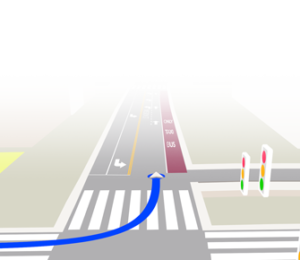Glossary: GNSS Terms and Definitions
Reference guide for terminology and technical concepts
A
A measure of the correctness of a GNSS positioning solution. Accuracy is the difference between the actual position of an object and its location as measured by the GNSS positioning solution. Read more…
ADAS (Advanced Driver Assistance Systems) are electronic systems in vehicles that utilize sensors like cameras, radar, LiDAR, and GNSS to aid drivers in various driving and parking functions, enhancing safety and the driving experience. Read more…
The alert limit defines the maximum allowable position error for safe operation, triggering an alert if the system’s calculated protection level exceeds it to ensure integrity in safety-critical functions. Read more…
ASIL (Automotive Safety Integrity Level) is a risk classification system from the ISO 26262 standard that assesses and mitigates hazards in vehicle electronic and software systems, guiding development processes to ensure functional safety. Read more…
ASPICE (Automotive Software Performance Improvement and Capability dEtermination) is a process assessment model that provides a framework for evaluating and improving the development of automotive software and electronic systems, ensuring quality and reliability. Read more…
B
A baseline is the vector distance between two GNSS receivers: a stationary base station and a mobile rover. In essence, it measures the separation between the known reference point and the unknown position you are trying to determine. Read more…
The BeiDou Navigation Satellite System (BDS) is China’s global navigation satellite system, owned and operated by the China National Space Administration. Read more…
C
In GNSS, a constellation refers to a group of satellites working together to provide global or regional positioning services, with their arrangement and number designed to ensure users can receive signals from multiple satellites for accurate position calculations. Read more…
A Continuously Operating Reference Station (CORS) is a fixed, precisely located GNSS receiver that continuously collects and provides raw satellite data to generate correction information, enhancing the accuracy of GNSS positioning for various high-precision applications. Read more…
D
A geodetic datum is a specific realization of a reference frame, providing a practical model of the Earth’s shape, size, and orientation that enables consistent and accurate geographic coordinates for mapping and positioning. Read more…
Dead reckoning is a navigation technique that estimates an object’s current position by updating a previously known position with inertial sensor measurements of speed, direction, and elapsed time, often used to complement GNSS in signal-denied environments. Read more…
Differential GNSS (DGNSS) is a technique that enhances standard GNSS accuracy by applying correction data from a base station in a precisely known location to calculate the position of a nearby rover. Read more…
E
The Earth-Centered, Earth-Fixed (ECEF) coordinate system is a 3D Cartesian reference frame with its origin at the Earth’s center of mass, used in satellite navigation and geodesy to represent positions with (X,Y,Z) coordinates fixed to the rotating Earth. Read more…
F
Fixed RTK is a high-precision GNSS positioning mode that achieves centimeter-level accuracy by resolving carrier phase ambiguities to integer values, ensuring the highest possible precision for applications like surveying and autonomous vehicles. Read more…
Float RTK is a GNSS positioning state where carrier phase ambiguities are estimated as floating-point numbers, providing improved accuracy over standard GNSS but less precision than fixed RTK, often serving as a transitional phase before achieving a fixed solution. Read more…
Functional safety is a concept ensuring system operation prevents unreasonable risk by managing errors and failures, particularly in automotive and industrial electronic systems, as defined by standards like ISO 26262. Read more…
G
Galileo (GAL) is the European Union’s global navigation satellite system that provides highly accurate positioning and timing services worldwide. It is owned and operated by the European Space Agency and the European Union Agency for the Space Programme. Read more…
Geofencing is a location-based technology that uses GPS, RFID, Wi-Fi, or cellular data to create a virtual geographic boundary. Once this boundary is established, software can be configured to trigger a response when a mobile device or asset either enters or exits that defined area. Read more…
GLONASS is Russia’s global navigation satellite system. Read more…
GNSS, or Global Navigation Satellite System, is a collective term for satellite constellations like GPS, Galileo, BeiDou, and GLONASS, providing global positioning, navigation, and timing services for a wide range of applications. Read more…
Global Positioning System (GPS) is the United States’ satellite navigation system, and the first operational GNSS. It is owned by the U.S. Government and operated by the the U.S. Department of Defense. Read more…
H
Hardware-in-the-Loop (HIL) testing is a validation method that connects physical GNSS hardware to a simulated environment, allowing for comprehensive, realistic testing of positioning systems and software in a lab setting before real-world deployment. Read more…
I
An inertial measurement unit is a sensor that measures gravity and angular rate of an object along three axes. The IMU is a component of a positioning system within a vehicle or device. Read more…
Integrity in positioning systems is the measure of trust in the system’s accuracy and its ability to provide timely warnings when the information should not be used for safety-critical functions. Read more…
Integrity risk in positioning systems is the probability that a system’s true position error exceeds a specified protection level without a timely alert, crucial for ensuring safety in critical applications like autonomous vehicles. Read more…
Ionospheric delay is a major source of error in GNSS positioning. It occurs because satellite signals slow down and bend as they pass through the ionosphere, a layer of Earth’s atmosphere filled with electrically charged particles. Read more…
ISO 21434 is an international standard for cybersecurity engineering in road vehicles, providing a framework to manage cybersecurity risks throughout the automotive system lifecycle and ensuring protection against cyber threats. Read more…
ISO 21448, also known as SOTIF (Safety of the Intended Functionality), is a safety standard that addresses risks arising from functional insufficiencies or misuse in advanced driver assistance and automated driving systems, even when no system faults are present. Read more…
ISO 26262 is an international standard for functional safety in road vehicles, providing guidelines to ensure that electrical and electronic systems perform safely and reliably, even in the event of hardware or software failures. Read more…
ITRF (International Terrestrial Reference Frame) is a globally recognized geodetic reference frame that provides a standardized set of 3D coordinates for precisely measuring positions on or near the Earth’s surface, accounting for its dynamics like tectonic plate movement. Read more…
J
K
L
M
A Measurement Engine (ME) is a core component of a GNSS positioning system that processes raw satellite signals into usable observations like pseudorange, carrier phase, and Doppler shift, providing foundational data for precise position calculations. Read more…
Multi-constellation GNSS refers to the use of signals from multiple global and regional navigation satellite systems to determine position, velocity, and precise time. Read more…
Multipath is a source of error in GNSS that occurs when a satellite signal reaches a receiver via both a direct path and one or more reflected paths. The reflected signals, bouncing off nearby surfaces like buildings or the ground, can interfere with the direct signal, causing the receiver to calculate an inaccurate position. Read more…
N
Network RTK is an advanced GNSS correction technique that achieves centimeter-level positioning accuracy over wide areas by utilizing a network of continuously operating reference stations to model and correct spatially correlated errors. Read more…
In the context of GNSS and navigation, NMEA is the name of a standardized communication protocol that defines how electronic devices, particularly marine navigation and positioning equipment, transmit data to each other. Read more…
NTRIP (Networked Transport of RTCM via Internet Protocol) is a standard protocol for streaming GNSS correction data over the internet, enabling real-time high-precision positioning for various applications. Read more…
O
Observations in GNSS are the raw measurements made by a receiver from satellite signals, including pseudorange, carrier phase, and Doppler shift, which are fundamental for calculating position solutions. Read more…
OSR (Observation Space Representation) is a GNSS correction format that provides real-time adjustments to raw satellite observations by combining all error sources into a single correction per satellite and signal, along the line-of-sight to a reference station—typically used in RTK systems to enable high-accuracy positioning. Read more…
P
A Positioning Engine (PE) is a software component that processes GNSS data and sensor inputs to deliver precise real-time position, velocity, and time outputs. Read more…
Positioning, Navigation, and Timing (PNT) refers to a suite of technologies and services that enable users to determine their location, guide movement from one place to another, and synchronize activities or systems in time. Read more…
PPP (Precise Point Positioning) is a GNSS correction technique that achieves centimeter- to decimeter-level accuracy globally without a local base station by applying precise corrections for satellite orbits, clocks, and atmospheric delays to the user’s receiver. Read more…
PPP-RTK is a hybrid GNSS correction technique that combines the global coverage of PPP (Precise Point Positioning) with the rapid convergence and centimeter-level accuracy of RTK (Real-Time Kinematic) by using a regional network of reference stations to provide additional atmospheric and phase bias corrections. Read more…
Precision in positioning systems refers to the consistency or repeatability of measurements, indicating how closely repeated position estimates cluster together regardless of their closeness to the true position. Read more…
A Protection Level (PL) is a statistical bound on a positioning system’s potential error, defining a region where the true position lies with high probability, and if it exceeds a predefined Alert Limit, it triggers a warning for safety-critical applications. Read more…
Pseudorange represents the apparent distance between a GNSS satellite and a receiver, calculated by measuring the time it takes for a satellite signal to travel from the satellite to the receiver, multiplied by the speed of light. Read more…
Q
QZSS (Quasi-Zenith Satellite System) is Japan’s regional satellite navigation system. It is owned by the Government of Japan and operated by QZS System Service Inc. Read more…
R
A geodetic reference frame is a standardized coordinate system that defines positions on Earth with high precision, enabling consistent GNSS positioning by accounting for the planet’s shape, motion, and gravity. Read more…
RINEX (Receiver Independent Exchange Format) is a standardized ASCII data format that enables exchange and storage of raw GNSS satellite observations, navigation, and meteorological data in a receiver-independent way, supporting multiple constellations and enabling high-precision positioning and equipment interoperability. Read more…
A GNSS rover is the device in the field, such as a vehicle, drone, robot, or handheld receiver, whose position needs to be determined by receiving satellite signals and applying real-time correction data from reference stations for precise positioning. Read more…
RTCM (Radio Technical Commission for Maritime Services) is a standards organization and also refers to the widely adopted messaging protocol it develops for transmitting real-time differential GNSS correction data. Read more…
RTK (Real-Time Kinematic) is a high-precision GNSS technique that uses a base station to transmit real-time corrections to a rover, enabling centimeter-level positioning accuracy by resolving carrier phase ambiguities. Read more…
S
SBAS (Satellite-Based Augmentation System) is a GNSS augmentation system that broadcasts wide-area correction data via geostationary satellites to improve positioning accuracy and integrity. Read more…
Single baseline RTK refers to an RTK configuration where a rover receives correction data from a single physical base station located at a known position. The “baseline” is the distance between the base station and the rover. Read more…
Software-in-the-Loop (SIL) testing is a method where GNSS software is verified and validated in a simulated environment using synthetic or recorded data to ensure functionality, integration, and performance before deployment on physical hardware. Read more…
SOTIF (Safety of the Intended Functionality), defined by ISO 21448, addresses risks from functional insufficiencies or foreseeable misuse in systems that behave as designed but may still pose hazards, particularly in advanced driver assistance and autonomous systems. Read more…
SSR (State Space Representation) is a GNSS correction format that separately transmits individual error components like satellite orbit, clock, ionospheric, and tropospheric delays, enabling flexible and scalable high-precision positioning. Read more…
A GNSS station is a fixed receiver installed at a precisely known location, serving as a reference point for generating correction data and monitoring network integrity in high-precision positioning systems. Read more…
T
Target Integrity Risk (TIR) is the maximum allowable probability that a safety-critical GNSS system will provide a hazardous position error without timely alerting users, ensuring the system’s reliability and trustworthiness for critical applications. Read more…
Tropospheric delay is a significant source of error in GNSS positioning. It occurs because satellite signals slow down as they pass through the Earth’s troposphere, the lowest layer of the atmosphere where weather phenomena occur. Read more…
Time to First Fix (TTFF) is a measure of the duration of time it takes a GNSS receiver to acquire satellite signals and compute its initial position after startup. Read more…
U
V
V2X (Vehicle-to-Everything) is a system where a vehicle shares information from its sensors, cameras, and internal systems with other vehicles, infrastructure, pedestrians, and networks to enhance safety, traffic efficiency, and enable advanced driver assistance and autonomous driving. Read more…
A Virtual Reference Station (VRS) is a network-based RTK system that generates synthetic correction data from a software-defined base station, providing localized GNSS corrections to a rover without requiring a dense network of physical stations. Read more…
W
The Wide Area Augmentation System (WAAS) is a Satellite-Based Augmentation System (SBAS) developed and operated by the U.S. Federal Aviation Administration (FAA). Read more…
Wheel odometry measures a vehicle’s travel distance by counting wheel rotations, providing essential motion data, especially in GNSS-denied environments, and is often fused with IMU and GNSS inputs to improve positioning accuracy and reliability. Read more…







